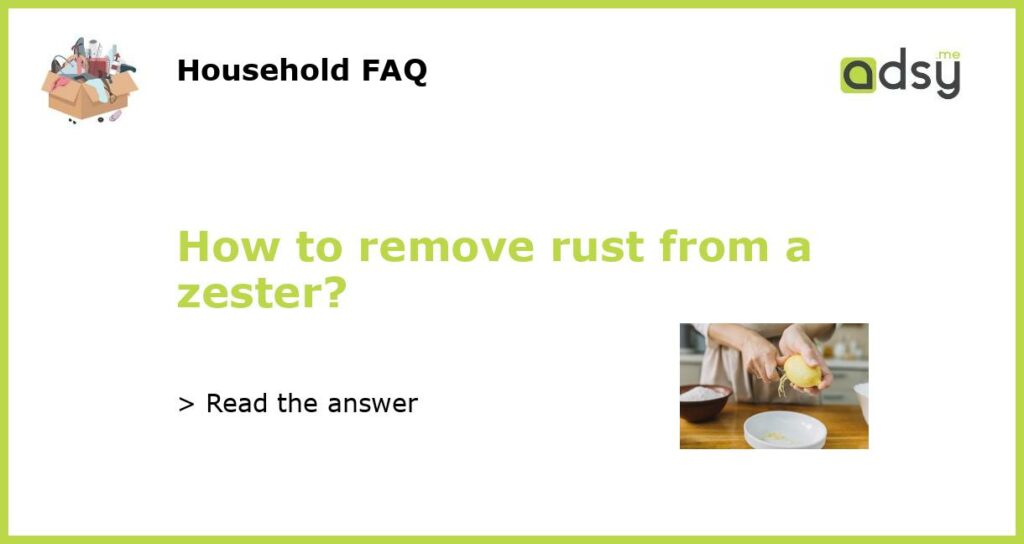Why Rust is a Problem on a Zester
When it comes to kitchen utensils, rust can be a big issue. Not only does it affect the appearance of the utensil, but it can also impact its functionality. One such utensil that is prone to rust is a zester. A zester is a kitchen tool used for grating the zest (outer peel) of citrus fruits. The small, sharp blades on a zester make it efficient at extracting the flavorful oils from the fruit’s peel. However, if rust starts to form on the zester, it can hinder its ability to grate the peel effectively and can even contaminate the food you are preparing.
Step-by-Step Guide to Remove Rust from a Zester
If you’ve noticed rust on your zester, don’t worry! There are several effective methods for removing rust and restoring your zester to its former glory. Here is a step-by-step guide on how to remove rust from a zester:
Scrub with Lemon Juice and Salt
One of the easiest and most natural ways to remove rust from a zester is by using lemon juice and salt. Lemon juice is acidic and acts as a natural cleaner, while salt helps with abrasive scrubbing. Start by sprinkling salt on the rusted areas of the zester. Then, cut a lemon in half and use it to scrub the salt onto the rust. The acid in the lemon juice will react with the rust and help break it down. Rinse the zester with water and dry it thoroughly.
Soak in Vinegar
Vinegar is another excellent rust remover that can be used for zesters. Fill a container or bowl with enough vinegar to fully submerge the zester. Place the zester in the vinegar and let it soak for at least one hour, or overnight for more stubborn rust. The vinegar will dissolve the rust and make it easier to remove. After soaking, use a brush or sponge to scrub away any remaining rust. Rinse the zester with water and pat it dry.
Use Baking Soda Paste
Baking soda is a versatile household item that can also be used to remove rust from a zester. Create a paste by mixing baking soda with water until it forms a thick consistency. Apply the paste to the rusted areas of the zester and let it sit for about 30 minutes. The baking soda will react with the rust and loosen it from the surface of the zester. Use a brush or sponge to scrub away the rust, then rinse the zester with water and dry it thoroughly.
Apply Naval Jelly
If the rust on your zester is particularly stubborn, you may need to use a stronger rust remover like naval jelly. Naval jelly contains phosphoric acid, which is effective at dissolving rust. Apply a thin layer of naval jelly to the rusted areas of the zester and let it sit for the recommended amount of time specified on the product packaging. Then, use a brush or sponge to scrub away the rust. Rinse the zester thoroughly with water, making sure to remove all traces of the naval jelly, as it can be harmful if ingested. Dry the zester completely before using it.
Prevent Future Rust
Once you have successfully removed the rust from your zester, it’s important to take preventive measures to avoid future rust. After each use, wash the zester with warm soapy water and dry it thoroughly to prevent moisture from causing rust. If possible, store the zester in a dry location. You can also apply a thin coat of mineral oil to the zester after cleaning and drying it, as this can help prevent rust from forming. By taking these steps, you can prolong the lifespan of your zester and ensure it remains rust-free for future use.






